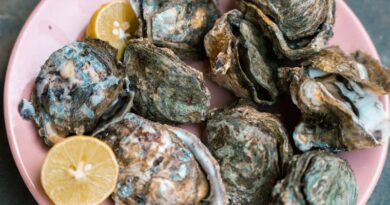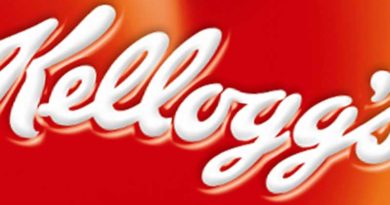Guideline Daily Amounts – GDA’s
I thought I’d see if I could find a calculator on the internet anywhere to see what my diet would register on the GDA scale. I imagine it will score very badly, because we are supposed to be following the “Eatwell plate” and I think this is the cause of obesity, rather than the basis of sensible diet advice.
First of all – try finding out what you’re supposed to be having on a daily basis – you’d better have some free time to do some research. This morning (16/12/09) I typed in “GDA calculator” into Google and:
– the top two sites that come up are Kelloggs.co.uk. Good to know a sugary cereal company is top of the list to advise me on what I should be eating!
– The third option is whatsinsideguide.com – that looks more official so I click on that one. The photos look very similar to those on the Kellogg’s site, so I look to see who runs the site and it’s the “Food and Drink Federation on behalf of the UK food and drink manufacturing industry”. They have Google places 3 and 4. I’m not doing very well so far.
– 5th place is krafthealthyliving.co.uk (Kraft make Toblerone, Oreo cookies, Terry’s chocolate orange, Ritz crackers and many more delights that I surely should not be eating).
– Then Kellogg’s come back in and take 6th and 7th places.
– ehow.com manage to get 8th place – even on the Google page I can see a mention of Kellogg’s in this link, so I ignore that one also.
– 9th place is someone trying to flog me software (shareme.com or something). This is fair enough – you will need a computer programme to work out your GDA when the time comes!
– 10th place looks official (hoorah!). I click on gdalabel.org.uk – ORG no less – how government endorsed is that?! Well not at all actually. www.gdalabel.org is run by the food and drink federation and you can see on this link to the GDA calculator page the names of the companies keen to tell you how their products can be accommodated into the Guideline Daily Amounts: Coca-Cola; Kellogg’s; Kraft; McDonalds; Tesco and Unilever. (As two can play at this game, I’ve got www.theobesityepidemic.org so that I can offer some alternative, independent, obesity advice – not sponsored by any drug or food companies).
Food manufacturers must love GDA’s! They must also love dieticians like Nigel Denby who has even written a book about how on earth to work out your GDA’s (I have it in front of me and I still haven’t got a clue – all nonsense anyway). Food manufacturers love people having ‘a calorie allowance’ that they can ‘spend’ how they like – it drives humans down the route of getting the biggest bang for the buck and that will be a calorie counted processed cereal bar and calorie counted processed cereal and calorie counted processed biscuits and so on. Dieters rarely choose a salmon steak cooked in butter with green beans when they can have a 100 calorie muesli bar and a 100 calorie tube of long lasting sweets and a 100 calorie ‘treat’ dessert and two 50 calorie biscuits and so on. The biggest bang for the calorie buck always comes from carbs, as they are lower in calories than fats. But fats have no effect on insulin and carbs do impact insulin and it is insulin, and not calories, that make us fat!
Anyway, back to trying to work out what GDA’s are. I couldn’t easily see what all the GDAs are on the web site run by Nigel Denby (or in the book). I could however see all this info immediately on the Kellogg’s site. “GDA’s at a glance” – there it was. Let’s say I’m an average woman, I’m supposed to have 2000 calories a day, 70g of fat (only 20g of these 70g should be saturated fat, but there is nothing to say that all 70g can’t be transfats if I wanted!) I’m supposed to have 230g of carbohydrate (now do you see why food manufacturers love GDA’s?!) I’m supposed to have 90g of sugar (Kellogg’s are hardly going to distinguish between natural sugar in a carrot or in milk – they won’t mind if I have a bowl full of the white stuff in SpecialK). Finally I am to have 6g of salt and 24g of fibre. (Did they mean up to 6g of salt and up to 90g of sugar and at least 24g of fibre? Who knows!)
There are also RDA’s – Recommended Dietary Allowances (I got these from a different site), which I am also supposed to take in (* means adequate intake): vitamin A = 700 (µg); vitamin C = 75 (mg); vitamin D = 5* (µg); vitamin E = 15 (mg); vitamin K = 90* (µg); thiamin = 1.1 (mg); riboflavin = 1.1 (mg); niacin = 14 (mg); vitamin B6 = 1.3 (mg); foliate = 400i (µg); vitamin B12 = 2.4 (µg); pantothenic = 5* (mg); biotin = 30* (µg); choline = 425* (mg); calcium = 1,000* (mg); chromium = 25* (µg); copper = 900 (µg); fluoride = 3* (mg); iodine = 150 (µg); iron = 18 (mg); magnesium = 320 (mg); manganese = 1.8* (mg); molybdenum = 45 (µg); phosphorus = 700 (mg); selenium = 55 (µg); zinc = 8 (mg); potassium = 4.7* (g); sodium = 1.5* (g); chloride = 2.3* (g).
Now, dear readers, you had better be very, very good at maths, as you have to get all of these variables to come together on a daily food intake basis. All the carbs and fats and the ‘right’ fats and the sugars and the salt and the fibre and all the vitamins and minerals – all within your 2000 calories a day. Don’t forget, if you’re doing a calorie controlled diet or weight watchers, you’ll be on 1000-1200 calories a day so even more luck to you! (Where’s that software link?!)
As I buy real food, I wouldn’t know where to start. My bag of porridge oats from the farm shop has a tiny label with the price and 100% organic oats and that’s all I need to know. My fish from the fish lady (Sarah) in Chepstow has no label on it. My fruit & veg, from the local pensioner who delivers a box to us each Wednesday, has no labels whatsoever. Oliver’s eggs (Oliver is the ‘egg boy’ in the village) have no labels.The meat from the butchers has no label. We don’t even have a record of the weight of whatever rib of beef or chops we’ve bought. My 85% chocolate has a label (excellent!) This tells me that when I eat 100g of it each day, I have an impressive 46g of fat and 28g of this is saturated. Good to know that cocoa is such a natural food! So that would be my day blown on 2/3 of a bar of dark chocolate. A bowl of Kellogg’s cereal and a few Kraft Ritz crackers and no doubt I’d get gold stars from the GDA devotees. This is little short of criminal given the state of the obesity epidemic.
Seriously – you can either try and work out your GDA’s and RDA’s and make Kellogg’s and Kraft’s day or you can just eat real food, as nature intends us to eat it, and make your day.




all I am trying to find out is the daily guideline for vitamins IS THAT TOO MUTCH TO ASK!
Here are the US recommended intakes: http://en.wikipedia.org/wiki/Reference_Daily_Intake
Here are the UK ones: https://www.gov.uk/government/uploads/system/uploads/attachment_data/file/384775/familyfood-method-rni-11dec14.pdf
Dear Zoe
I just want to tell you that I found your article on GDA’s and RDA’s so very illuminating. I was actually trying to find out if 1 banana a day contained enough of the ‘RDA’ of potassium (wish me luck with that eh? lol) when I happened across this page.
I’m now going to take a peek at your Harcombe Diet link in the hope that I can get some sensible advice about what are the best foods to tackle my weight problem, obviously plenty of fresh fruit and veg but I am looking for a more varied, less boring diet that I (weak as I am) will actually stick with.
Kind regards
katrina